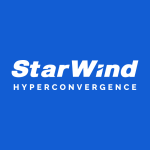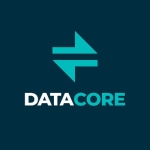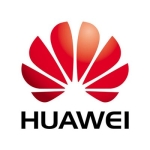What is our primary use case?
It's really about simplifying my infrastructure and getting myself to be cloud-enabled in a hybrid infrastructure so that I can move in and out of the cloud. That way, I can have a very easy-to-manage, intelligent infrastructure so I no longer have to worry about level one and level two calls. The storage is intelligent, it's taken care of itself. For example, if I want full-stack management, or I want to know if my virtual machines are being bad actors or noisy neighbors, or the firmware on my servers or hosts, or my hardware is all in good shape or if it has a predictive failure — I want to know about it and I want it to open up a ticket for me so that the part can be delivered to me and I don't have to open up a ticket.
Here's a good scenario: Years ago I used to manage large data centers. I started out with 800 servers, I had 16 people. When I left there, I had 2,900 servers and eight people. That is the reality of IT staff. They're constantly being compressed and asked to do more with less. In order to do that you have to have an intelligent infrastructure. You have to have a methodology that allows you to be able to supply your user community with the services that they need consistently with a smaller staff. That is what really drives DACI and HCI.
Our clients come in all sizes, from small, medium, and large-sized businesses.
How has it helped my organization?
Nimble gives time back to our clients. They know it's secure. They know that it's self intelligence software. They know that it's going to report to them and let them know if there's an issue — it's going to give them predictive data. It's going to give them a full stack of data. What a lot of them couldn't see before was what's going on with the virtual environment. Now they can see that because it tells them. So not only is it storage, it's telling them, "Hey, here's how your virtual machines are acting, and oh, by the way, you need some more memory on this server." You don't expect that from any other storage. I've only seen it with Nimble. It gets them out of that firefighting mode. Now they can actually go do the things that their customers are asking them to do. That's how it changed their life from day to day for the business.
What is most valuable?
What's really intriguing about it is they truly took everything that was required to run on the host, typically in an HCI solution, and ran it out of the storage.
You don't have to have any virtual controllers or any of that management that takes away from the process or a memory that you would use for your virtualization. You don't have to take any of your resources away — it's brilliant.
The nice thing about it is that it truly integrates with the cloud, so I can move my volumes bi-directionally in and out of the cloud. It has intelligent replication to the point where I can replicate to two different sites and to the cloud.
There's a three, two, one, zero rule. That means I need three copies of my data on two different types of media and I need one of them to be protected from ransomware. I need it to be immutable. The zero stands for zero errors; I need to know that my backup was successful and I've actually tested it and can say that I can restore from it. A lot of people miss that point.
The intelligence of the solution, in general, is great. There are other great features like Triple+ parity RAID. They are on par, or better than any of the other storage vendors out there for a much more reasonable price, but what really puts them over the top for customers is the intelligence.
Every time a vendor buys someone else, and HP is no different than anyone else, they usually mark it up. When they bought Nimble, I said, "Oh man, that's it. Nimble's done. They're going to screw it up." And they didn't. They actually invested a lot of time and a lot of resources to make it better and to take what was good inside of Nimble, including the InfoSite intelligence, and applied it to other products in their portfolio to make the whole stack intelligent. They really did what they set out to do, which blows me away because typically they fall down on their face.
What needs improvement?
Nimble It's only available using iSCSI — Nimble can run iSCSI or Fiber Channel. Although iSCSI is cheaper, from a performance perspective, if you've got a really high-performance need, then you need Fiber Channel.
Not to get too technical, but people tend to think that adding more ports gives you that much more bandwidth — that's not true. Every stream must be dedicated to a port. You could actually do port saturation and not use some of your ports that you just dedicated to your storage.
It's not as mature as Fiber Channel — no one is. Fiber Channel is more expensive, but if high-performance is what you seek, then you need Fiber Channel. I hope that they bring that forward. They're doing all kinds of leaps and bounds with the new Nimble. I really love where they're going, but I think Fiber Channel should be on the docket for dHCI.
It would be nice if they just provided a simple, easy to read matrix (white paper) on the different models. Today, it's a little convoluted. It's a little hard to read. You have to actually show it to a customer and explain it to them. I shouldn't have to explain it to them. It should be very simple: here are your options, here's your expansion, here's how much storage you get with that, etc. The information is kind of there, but it's just, it's ugly.
I don't mean to call anyone's baby ugly, but they need to improve that datasheet. That would be my pet peeve with them. Their documentation needs to be simpler to read yet more detailed so it's easy to compare models and easier for clients to pick. They shouldn't have to have us sit down with them and explain to them why. They should be able to look at this and say, "Oh, okay. I understand where I need to be. I don't need a decoder to figure it out." That and the fiber channel are my pet peeves.
The documentation needs to be improved — the quick specs are just horrible.
I think there could be more automation capabilities; however, I think they're moving in this direction. More automation to open and close tickets, to get those service tickets open. They've done a lot in that area and I think that they again should focus on introducing more somewhere down the road.
For how long have I used the solution?
I have been using Nimble for roughly four years.
What do I think about the stability of the solution?
The stability is actually incredible because as they improve the older systems, the new operating system and new firmware deployed on it. It's now at six nines. So it's actually more reliable than it was when we bought it — it's fantastic.
I've never had an issue with Nimble Storage. The only problem that I've ever seen wasn't actually to do with the storage, It was an issue with the network. They didn't have their iSCSI set up correctly. It wasn't efficient. They weren't getting the throughput that they wanted. That was a simple change, but it had nothing to do with the storage; however, if you were to sit there and look at it with typical software that comes with VMware, it's going to say there is a storage latency issue. This is because it's looking at the time it takes to travel from the host to the storage and back. What it fails to see is that there are several components along that line. It doesn't mean it's your storage. InfoSite was able to see that, tell us, and show us where the real issue lied. The storage was acting very quickly, but the network was not.
What do I think about the scalability of the solution?
It's very easy to scale. It's very simple to scale. Regarding the dHCI, if you put a new node on the network, it discovers it and says: "You want to add it?" — it's fantastic. I think they've done a real good job.
How are customer service and technical support?
I didn't use them. I reached out to one of my friends at one of the distributors, because I know she knows the dHCI code — I talked to her about it. We have our own lab and we put one up in our lab and we started playing with it and picking it apart. It was pretty much straightforward, so I didn't have to call on them. For this reason, I can't really evaluate them.
Which solution did I use previously and why did I switch?
I deployed quite a lot of different hyper-convergent products.
The reason why I switched really came down to the intelligence, the InfoSite, and the fact that I really liked the idea that I can scale my storage independently.
A lot of people bought hyper-converged and then they said, "Oh, I need some storage. So I'll just use the storage on the hyper-converged and present that out to another server." That tends to ruin HCI. It will ruin your HCI, your ratios by doing that. You'll outgrow the box. You'll be all frustrated. And they were.
With Nimble dHCI, once I deploy it and set it up for dHCI, I can then take a portion of that storage and say, "Hey, you know what? I want to attach a sequel server to this." Then I am ready to start using this additional storage. I can sweat out my other assets.
Everyone always thinks greenfield is the way to go. Sure, of course it is. But nobody can afford a greenfield data center. That's just crazy talk. When I ran data centers for years, we would budget-cycle the data center. We'd say, "Okay, I'm going to compute on year one; on year two, I am going to do networking; and on year three, I'm going to do storage." They never are aligned with each other — the age of the equipment is never aligned.
The refresh dates are never aligned. That makes it very difficult for those HCI stories. It's got to be the perfect storm. It really comes down to the fact that I need a better way to manage the infrastructure. That's when it becomes a more viable story. People say to me, "Well, I can buy servers cheaper here than I can in Microsoft Azure." Of course you can, but here, you're comparing a banana to an orange — they're not the same. The orange is obviously more tasteful.
I don't like bananas but If that's your thought process, that: "Hey, I want to refresh servers and that's all I want to do." Well, okay. Go ahead. Go ahead and do that. But you're constantly in that cycle. Why do you spend so many cycles refreshing? Why do you spend so many cycles maintaining infrastructure? Why is it that you have so many different tools to manage your infrastructure? The answer is because you won't get out of that mindset.
You have to step back from that mindset and say, "Imagine If I didn't have a data center. How would I do it today if I had a greenfield?" It doesn't mean you have to go out and start a greenfield — you start a little section that's green, move through your data center as you cycle, repurpose your budget to build the new infrastructure in a new way that's easier for you to manage and to procure.
How was the initial setup?
A customer could set this. A customer with zero experience could set this up. Just pick up the manual and go set it up. I happen to charge for that, so don't tell them I said that.
What's my experience with pricing, setup cost, and licensing?
I think the price is good.
What other advice do I have?
I hate talking about products. I think we should sit down and talk about what you are trying to do? What are your business goals? Because your business dictates to you what projects are important to them. What are they trying to accomplish? How do I help you accomplish those goals?
A lot of times, what it comes down to is they don't have the time to do the infrastructure the way we used to do infrastructure. That's no longer acceptable by the business because it's not important to the business. Think about how you can be a good business partner and provide them with the applications and the data they need access to from anywhere in the world. Look at us now. We're all home. I'm in my basement. Everyone feels bad for me. My basement is a fully furnished basement with a pool table, a beer fridge, a 60-inch flat-screen TV. There's even a music section over here with a full drum kit and guitars. So don't feel bad for me.
At the end of the day, you're not in the IT business. You're in the business of making some products, whether it's t-shirts, shoes, chairs — I don't care what it is. Whatever your products are, that's your business. Your business is not IT. But IT is the tool that helps you sell.
What the business wants to know is, "Hey, I'm giving you a lot of money for IT? How did you help me sell that chair? I need to sell more of those chairs in order to pay for that IT equipment." How do you help them do that? One of the ways is to reduce the work that you have to put in. You can focus on the applications and the innovation that helps them sell that chair. We should be talking about how do we help the business become more agile. You should be focused on, "Hey, they're working from home, how can I get them better access?" Maybe you shouldn't be doing anything in the data center. Maybe you should be moving to that hybrid infrastructure.
dHCI with Nimble Will give you the ability to start growing your data into the cloud in a bi-directional way. Now you can start talking about technology once you understand what their problems are; however, you can't just go in and talk about technology. You have to talk about what the problems are. How are you going to sell? If their problem is they're trying to put a screw in the wall and you hand them a hammer, you're not really helping them out — you'll get the job done, but it's going to be ugly.
On a scale from one to ten, I would give this solution a rating of nine.
There's always room for improvement. I think that more automation is needed. Certainly, they're getting there. I think that the reason why I am giving them a nine is that it's probably the best dHCI solution out there. From a storage perspective, outside of dHCI, I think it's one of the best storage solutions out there in the market. I think it's priced right and it's extremely intelligent.
My biggest pet peeve is you need to give IT folks time back. The worst thing in the world is when you've got a problem with a system and you call support and you get level one and they go, "Okay, I need you to go in and I need you to dump these reports for me." The brilliant thing with Nimble is you don't have to do that.
They already have the reports because InfoSight provides them with the data all the time. So you don't call level one, you don't call level two, you go directly to level three. To me, that's the way it should be.
You've got the data. Doesn't your team know how to read it? That to me is the most important feature of Nimble and what puts them on top of my charts. Because it's truly intelligent. Not only that, they're taking advantage of the intelligence of it to actually be proactive for their customers.
Which deployment model are you using for this solution?
On-premises
Disclosure: My company has a business relationship with this vendor other than being a customer. Reseller















